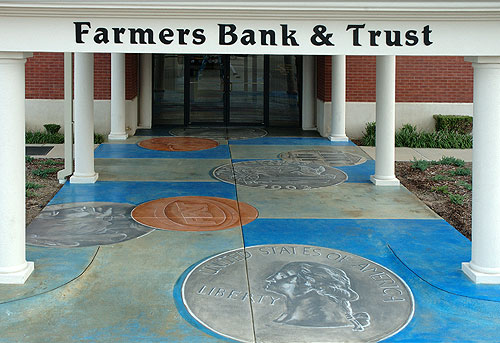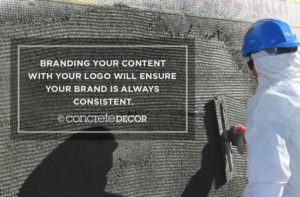
You can be the best in the business, hard-working and honest, or you may even be a member of that endangered species known as the “craftsmen.” You can run around trying to convince others that you are the one for the job, and in fact, your unsolicited references may be singing your praise as well.
But, in today’s world, we tend not to listen anymore.There are so many of us, we are all talking, and our words have become background noises for the stimuli that really distract us. If you want to say something today, you have to use the language that transcends culture, geography, and time. You have to use imagery.
As a professor of digital photography, I try to convince my students that, regardless of what their achievement is, they need to capture it, document it and exhibit it. If a product has quality, a good image of it will speak for itself. These images can be used in printed portfolios, Web sites, CDs, PowerPoint presentations, and proposals for corporate or civic projects.
One way to get the photos of your work out there is to send them to the manufacturers whose products you use. If the work highlights the products in a positive way, the manufacturers may wish to run these images in several different media. Also, step-by-step photos are very important to those who conduct workshops, distribute products, and write training manuals.
When recognized experts in the field choose to publish one of your photos, you have automatically become legitimate in the eyes of your future clients. I know that sounds ridiculous, but in their minds, the publication has validated the quality of your work. “If you are good enough to be in this magazine or a book, you must be the real thing.” You immediately have their trust and confidence that the work you do for them will be as good as what they see in the publications.
How do you get published? Well, first of all, do quality work. Secondly, invest in the best digital camera you can afford and a tall, sturdy ladder. Personally, I have hung off the side of houses, off tree limbs, and out of neighboring windows to get the shots I need. Thirdly, set your camera on the highest quality. If you are using a high-end consumer camera, set it to “RAW” or “TIFF.” These settings will give you the largest file, but don’t forget to process the RAW as a TIFF before sending it, because it is very unlikely the publisher will have the appropriate conversion software on hand.
While TIFF files are uncompressed, JPEGs usually contain 1/4, 1/8, or 1/16 of the information captured. Most of your point-and-shoot cameras will only record in JPEG format. So, again, set them to the highest quality available. Remember, the file size reflects limitations on resolution and image size.
 Finally, take lots of photos from several vantage points throughout different times of the day with the hope that one of them will say it all. Remember, if editors have to choose between great shots of good work and mediocre photos of great work … well, you can figure that one out for yourself.
Finally, take lots of photos from several vantage points throughout different times of the day with the hope that one of them will say it all. Remember, if editors have to choose between great shots of good work and mediocre photos of great work … well, you can figure that one out for yourself.
Some tips for photographing decorative concrete:
- Turn off your flash. Although the flash may travel 10 feet to 15 feet, the camera will only collect the amount of light it needs to expose the closest subject. The rest of your floor will drop off into darkness.
- Shoot from the highest vantage point you can to see the overall work. Sometimes it is much safer to stand on a nearby building and zoom in than to use a wide-angle setting from the top of a ladder. This technique will also reduce the distorted perspective commonly seen in wide-angle photos.
- Outdoors, use natural lighting at a time when shadows and highlights aren’t distracting. The best light could be a cloudy day or a midday sun. It all depends on what shows off your work the best.
- Indoors, you will most likely need artificial lighting. If there isn’t enough ambient light available, quartz construction lights work very well. Do not point the beam at the floor. Instead, bounce it off the ceiling or a wall to diffuse the light evenly across your work.
- Avoid shooting toward the light source. This can cause your photos to come out too dark or cause a “haze” that will diminish your details.
- For close-up details, a soft light at a low angle works the best. So early morning or just before dusk is a great time to photograph scored or stamped textures.
- Experiment with the “white balance” setting on your camera. In 90 percent of all shots the “auto” white balance setting works just fine, but when using artificial lights, the colors may be inaccurate.
- Limit the degree of photo editing you do. Every brand of photo software will allow you to crop edges and adjust brightness, contrast and color. Remember, the editors will do this too, to meet their needs and the criteria of their printers.
- Give editors a variety of good photos to choose from. One of the most forgotten shots for the amateur photographer is the “vertical.” The layout for most journals and books is vertical, so get comfortable turning your camera on its side.
If you want to edit photos to display in your portfolio, one tool you may find helpful is the “contrast adjustment.” Not only will it create more dynamics between the lights and darks, but it will also intensify your colors. Keep in mind that you should only use these editing tools to exhibit your work more accurately and not to embellish or falsify the truth. You will, at some point, be expected to live up to your image.
Adding your story is always an incentive to getting published. Whether it is about the technical process or the people involved, even a great photo may need a little help. If you don’t feel confident about your writing skills, don’t worry about it and just concentrate on telling your story. The editors will do their jobs, and in most cases, subject to deadline, they will send you a final draft for your approval.
Another thing you can do to facilitate this process is to obtain model releases for people who are present in your photos, especially if they are minors. Sample model release forms are available online and range from very legal and lengthy to incredibly simple. Personally, I would never sign a three-page model release because of the fact that I would never read it or trust it. Just a simple “pocket form” is fine for most situations. Nowadays, I include a property release statement or make it a line item on the contract so images of the work can be used for educational or promotional purposes. And when I send out photos, I send a copy of the model/property release with them. This puts my publisher at ease and makes it much easier for them to print my photos. Because of the society we live in, some of the best photos just aren’t worth the liability.
Again, the goal of getting published isn’t to feed an ego, but to attain the confidence of your clients — trust, credibility, and the assurance that their money will be well spent. When your photos become published, go ahead and make copies available to the client. In the past, we have actually matted, framed, and presented these to homeowners. Public acknowledgement may increase the value of their home and the value of your work at the same time.















